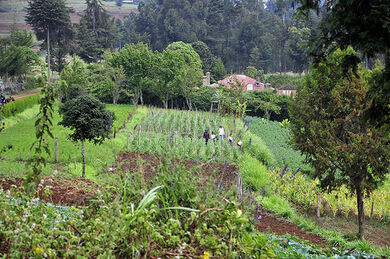For its annual World Food Day (16 Oct 2008), the UN Food & Agriculture Organisation (FA0) rightly focuses on the 923 million people suffering from malnutrition in the South - highlighting climate change as the key factor threatening their long-term food security. [1] In the short-term, rising oil prices have led to increasing food costs and scarcities, provoking riots in over a dozen countries from Burkina Faso, Haiti, to Mexico. The diversion of land for biofuel crops has also been a factor - with the world’s largest grain producer and exporter, the USA, diverting nearly 20% of its harvest to feed cars, rather than people. [2] [3]
Quotes[]
"Global warming is already underway and adaptation strategies are now a matter of urgency, especially for the most vulnerable poor countries. Hundreds of millions of small-scale farmers, fishers and forest-dependent people will be worst hit by climate change. Adaptation strategies, especially for the most vulnerable poor countries, where most of the over 920 million hungry people live, need to be urgently developed, reviewing land use plans, food security programs, fisheries and forestry policies to protect the poor from climate change," Alexander Mueller, FAO Assistant Director-General for Natural Resources Management and Environment Department. [4]
Random facts[]
- One billion people currently have calorie deficient diets, Source: University College London, May 14, 2009
- Globally, agriculture is calculated to be responsible for between 10-12% of the world’s total greenhouse gases. The scientific consensus is for 80% cuts on 1990 levels of greenhouse gas emissions by 2050.
- Although the oil price has halved from its recent high of $140 a barrel to around $75, long-term forecasts are for sustained higher prices - predicted to reach $200 a barrel over the next 5-10 years. [5] Higher oil prices mean higher input costs - fertiliser prices have doubled over the past year with 10-20% price hikes announced by major pesticide manufacturers.
- According to the UN, 10 million hectares of cropland are degraded or lost to erosion annually across the world. UNEP has stated that 50% of world’s arable land will be unusable by 2050.
Related[]
|
|
|
|
Wanted pages and external links
References
- ↑ http://www.fao.org/getinvolved/worldfoodday/en
- ↑ US Department of Agriculture estimate
- ↑ Soil Association October 15 2008
- ↑ UNEP, october 10 2008
- ↑ The Coming Oil Supply Crunch, Chatham House, August 2008,
